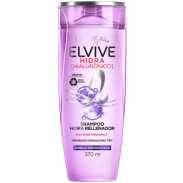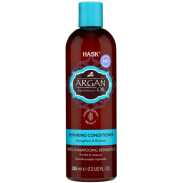Comparison between Elvive Hidra Hialurónico Shampoo vs. HASK Argan Oil Repairing Conditioner
- 30 components -
- 21 components -
Find out which product is better for your skin.
Ingredients in both products 5
Components only in Elvive Hidra Hialurónico Shampoo 25
Sodium Laureth Sulfate, Sodium Lauryl Sulfate, Cocamidopropyl Betaine, Sodium Chloride, Glycol Distearate and 20 more. Show all.
Uniqueness: 83.3%
Components only in HASK Argan Oil Repairing Conditioner 16
Cetyl Alcohol, Behentrimonium Chloride, Isopropyl Palmitate, Argania Spinosa (Argan) Kernel Oil, Butyrospermum Parkii (Shea) Butter and 11 more. Show all.
Uniqueness: 76.2%
Face to Face
Components position by position
1
Water
1
Water
2
Sodium Laureth Sulfate
2
Cetyl Alcohol
3
Sodium Lauryl Sulfate
3
Behentrimonium Chloride
4
Cocamidopropyl Betaine
4
Isopropyl Palmitate
5
Sodium Chloride
5
Argania Spinosa (Argan) Kernel Oil
6
Glycol Distearate
6
Butyrospermum Parkii (Shea) Butter
7
Hexylene Glycol
7
Olea Europaea (Olive) Oil
8
Guar Hydroxypropyltrimonium Chloride
8
Cocos Nucifera (Coconut) Oil
Show others
Positive Effects
Find out what good effects the product has
Both products provide the following effects: Antioxidant, Moisturizing, Cleansing, Softening, Soothing, Anti-aging, Lightening, Lifting, Healing, Elasticity improvement, Rejuvenation, Antifungal, Antiseptic, Hair conditioning, Hair structure improvement, Hair gloss, Hair growth stimulating
Effects unique for Hidra Hialurónico Shampoo:
Acne fightingEffects unique for Argan Oil Repairing Conditioner:
UV Protection, Antistatic, Nutrifying, Deodorant, Tones up skin, Regeneration, Anti dandruff, Hair protection, Hair follicle nutrition-- Show more --
ECO Metrics
Find out how eco-friendly the components are
Vegan
No
No
Cruelty free
No
Yes
Reef safe
Yes
Yes
Ozone layer safe
Yes
Yes
Organic score
natural
7 out of 30
23%
chemical
20 out of 30
67%
natural
8 out of 21
38%
chemical
12 out of 21
57%
Concerns
Pay attention to this information
-- Extra information --
Components by Skin Type
Find out what components are good or bad for your skin type
Dry skin
Positive: 1Negative: 2
Sodium Hyaluronate#15Sodium Laureth Sulfate#2Sodium Lauryl Sulfate#3
Oily skin
Positive: 1Negative: 0
Salicylic Acid#22
Sensitive skin
Positive: 0Negative: 4
Lactic Acid#11Salicylic Acid#22Linalool#25Citric Acid#28
Dry skin
Positive: 3Negative: 0
Panthenol#10Glycerin#12Stearyl Alcohol#13
Oily skin
Positive: 0Negative: 2
Isopropyl Palmitate#4Cocos Nucifera (Coconut) Oil#8
Sensitive skin
Positive: 0Negative: 3
Citric Acid#16Benzyl Benzoate#20Limonene#21

